Attention to Detail, Skill and Precision
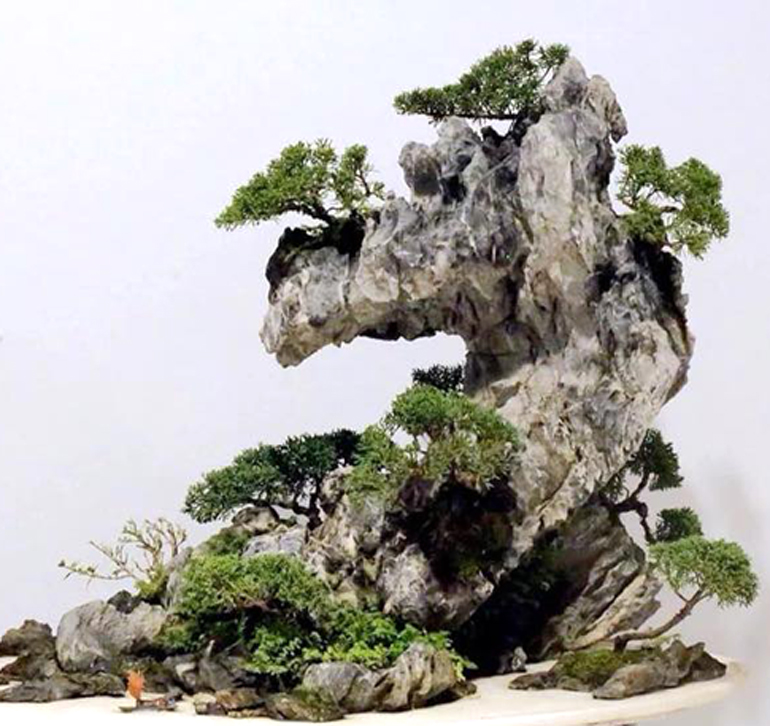
Part of large Penjing scene. The full construction is just below. The photo is from Hong Kong Bonsai Pots
I’ve long been fascinated by Penjing tray plantings The best exhibit remarkable attention to detail, skill and precision, resulting in dramatic scenes that can transport the viewer to places beyond their ordinary experience. Or if we’ve become jaded, then maybe just a yawn while we scroll to the next photo…
All the photos in this post are borrowed from Hong Kong Bonsai Pots
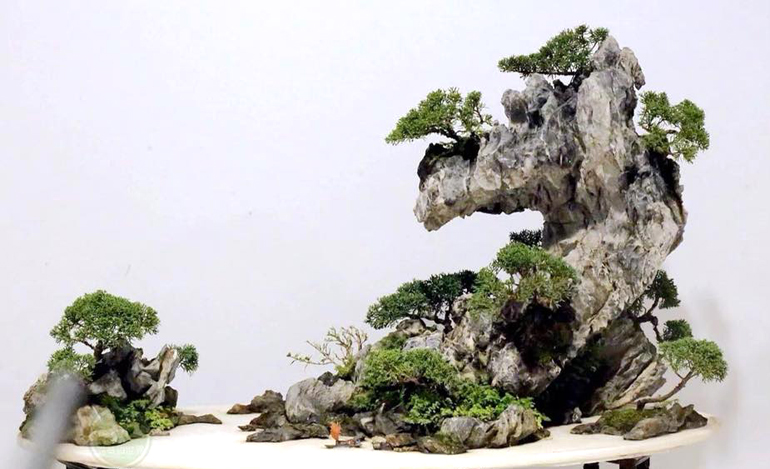
The whole magnificent scene. The open white spaces represent water. There's a boat with an orangish sail center front (you can see it better in the photo above). These small almost incidental traces of humans are common features in Penjing and are usually sized quite small in contrast to the grandeur of nature
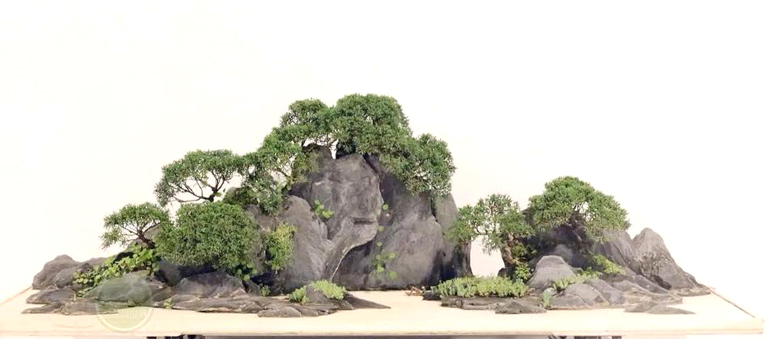
A litter softer than the one above with less dramatic rocks and more developed trees. Is that a boat?

A single large clump style* tree on the banks of quiet pond or slow stream. *We've been featuring clump style bonsai lately (here and here)
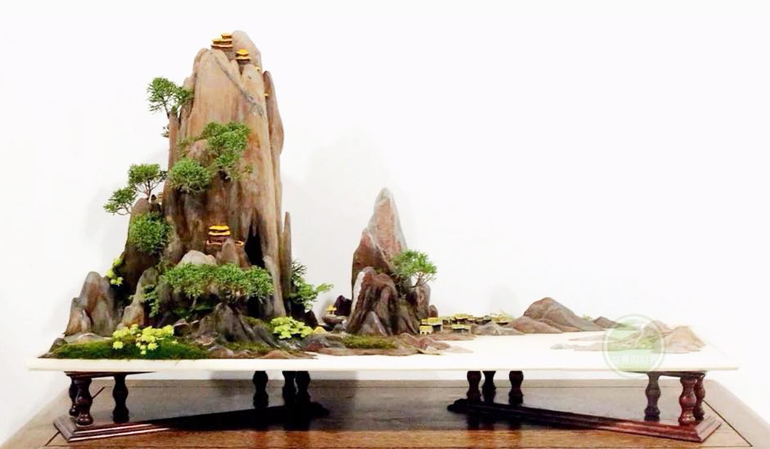
Jagged, towering rocks dwarfing human buildings. Perhaps the buildings on the larger rock are a monastery. There's a small, almost imperceptible village on the banks of the river to the right
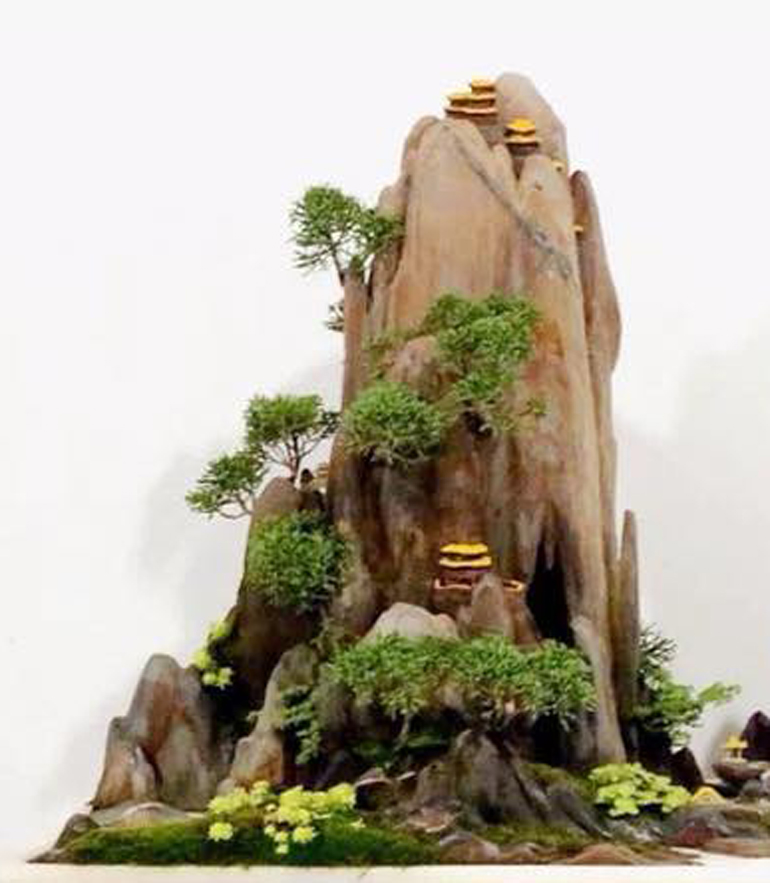
The large rock. I can see at least one man made structure that I missed in the photo above
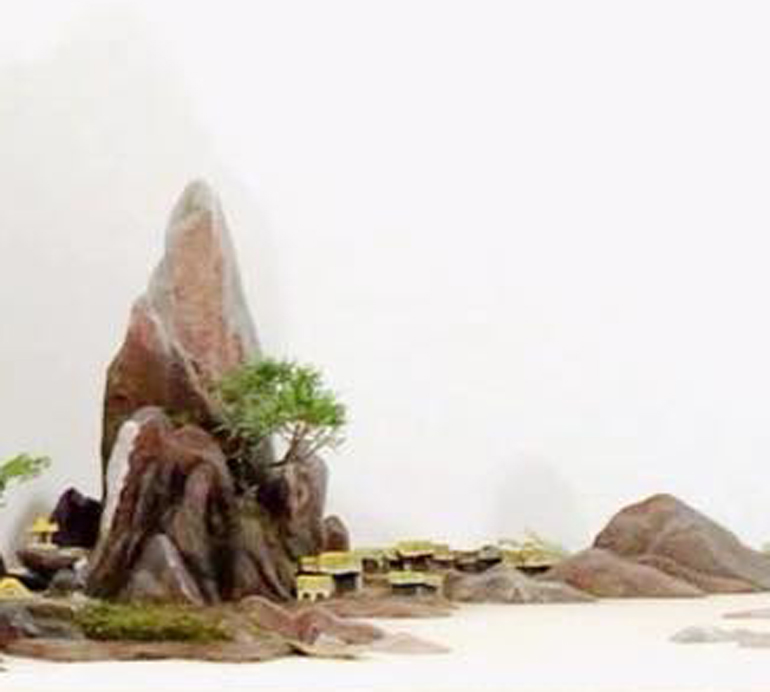
The smaller rock and village. A little fuzzy in this blown up photo, but still a pretty good look at the village
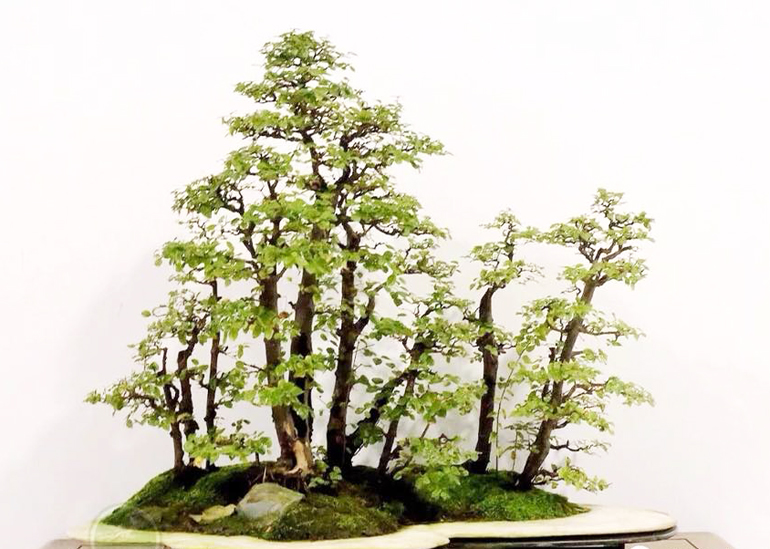
A simple forest provides a little change of pace. Or maybe it's not so simple?
Forest Bonsai – Focal Point, Balance, Scale, Age & That Elusive Quality…
I stumbled across the European hornbeam (Carpinus betulas) by Walter Pall on his Bonsai Adventures blog. The shot looks like spring with some trees lagging behind others.
Continuing with our multiple trunk theme (yesterday was Clump style, today is forests) and with Walter Pall (day before yesterday), we’ll go back in time once again to a post that originally appeared in 2014. (we’ve added a photo and a little more text). I think it’s one of our best on forests, and worth another look.
Without the dominant tree this forest planting by Walter Pall would be a whole lot less interesting. With the dominant tree the planting has a focal point, balance, scale, a feeling of age and that more elusive quality we call interest, or beauty.
Focal point. Everything organizes around the dominant tree. Your eye goes there first and from that point the rest of the planting falls into place.
Continued below…
Balance. If you look at the silhouette of the whole planting you’ll immediately see and feel how everything flows from the dominant tree, creating an overall sense of balance and harmony. This has a lot to do with the natural strength and dynamism of scalene triangles and something called The Golden Mean or Golden Ratio (aka Magic Thirds).
Scale. Notice how the large tree is toward the front. Not only does this show off its size and power, it also highlights a sense of depth when contrasted with the medium sized trees in the center axis (left to right) and the smaller trees in the back. Rather than seeing these trees as smaller as they go back, you might see them as further away.
Continued below…
Same forest. Same time. Different backdrop. Walter usually shoots his trees with two or three different backdops.
Continued from above…
Age. When it comes to age, there are two types of natural forests: ones where all the trees are more or less the same age and size (for example a stand of trees that grew up after a forest fire) and the more interesting and common old forests with trees that show a mix of ages and sizes.
This planting is a good example of the latter, with the main tree emphasizing and even exaggerating the contrast. To carry this a little farther, you might even imagine that at one time the dominant tree stood alone and gradually seeded the others.
Continued below…

The plantings are a little small in this composition, but you can still get a pretty good idea of how different backdrops effect our perception of the planting.
Continued from above…
Walter Pall often shows several photos of the the same bonsai with different backdrops and at different times. I think this is a good practice, especially given that no single photo will ever completely capture the power and dynamism of a good bonsai. Not to say that several photos will do that either, but they might help.
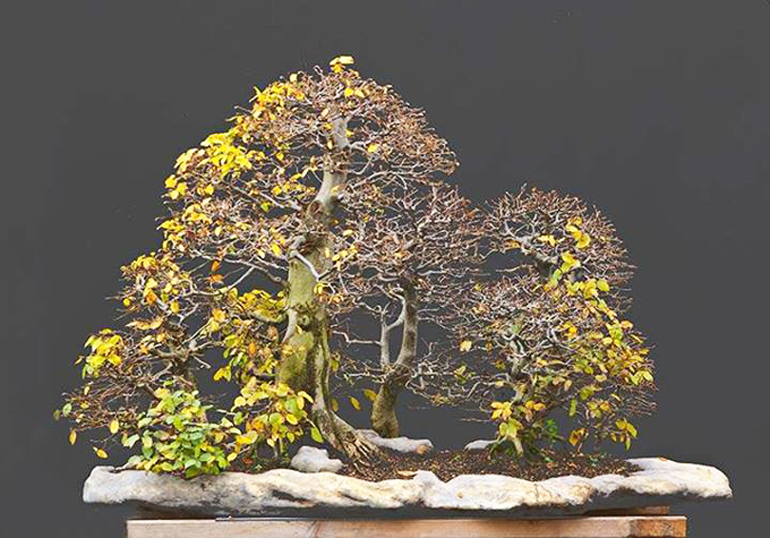
Same planting, fall foliage. You can see how the individual trees turn and drop on different schedules.
One of the rewards of winter hardy bonsai.
Clump Style Bonsai – Multiple Trunks with a Single Root Stystem
We found this extraordinary clump style Japanese maple on Bonsai Nakayoshi (sorry the link is no longer active). You can imagine that all the smaller trunks started as suckers on the roots of the main tree (you could also imagine that they started from seeds dropped by the main tree; in which case each seed would have its own roots, so that wouldn't qualify as a clump style bonsai).
Staying on our clump style theme from yesterday, I borrowed this one from our archives. It was titled Multiple Trunks Sharing a Single Root System – Clump Style Bonsai Forests (technically, I don’t think you would call a clump style bonsai a forest), and it was posted in August, 2015
Any discussion of multiple trunk bonsai should include clump style (Japanese: Kabudachi or Kabubuki) . Rather than boring you with my take on clumps, here’s something that I lifted from ofBONSAI Magazine (the link from 2015 is no longer live – the same goes for most of the links in this post)
“Clump style bonsai should have three or more odd number trunks grown from a single point (this definitive statement about odd number trunks is common, particularly with Japanese artists – here’s more on this). The natural equivalent might be a group of trees that have sprouted from a single cone, or a collection of mature suckers springing from the base of a single tree (in both cases they all share the same roots). All branches should grow outwards towards the light and create an overall triangular shape and composite crown….” There’s more here (sorry, another dead link)
This illustration is borrowed from the Kabudachi, Kabubuki article in ofBONSAI Magazine.
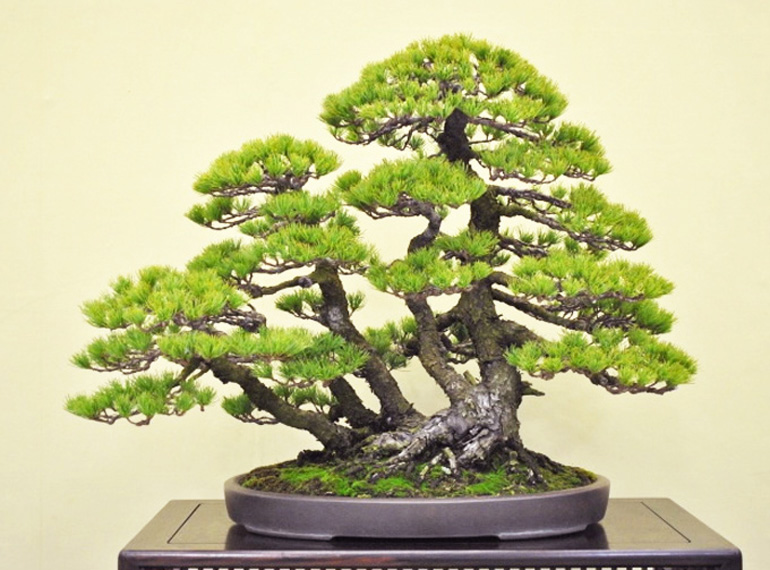
This Japanese white pine is from the 2011 Taikan-ten bonsai exhibition in Japan. It’s hard to tell from this angle if all the trunks are sharing a single root-system. It could be a twin-trunk tree and a triple-trunk clump combined. I borrowed the photo from Bonsai Empire.
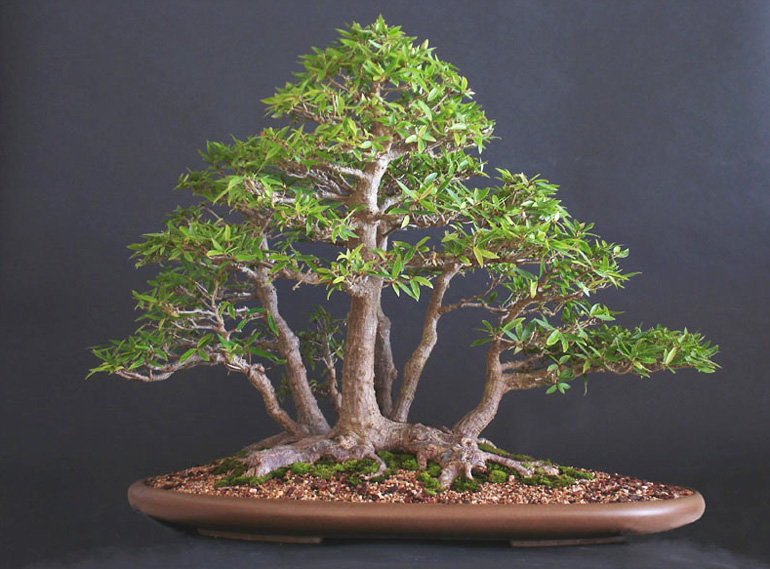
This very sweet clump style Willow leaf ficus is by Ernie Hernandez (this just might be a raft style planting). Aside from the how well the trunks and crown all go together, there's that perfect pot and those well-placed little spots of moss. The photo is from an old Art of Bonsai Project post.
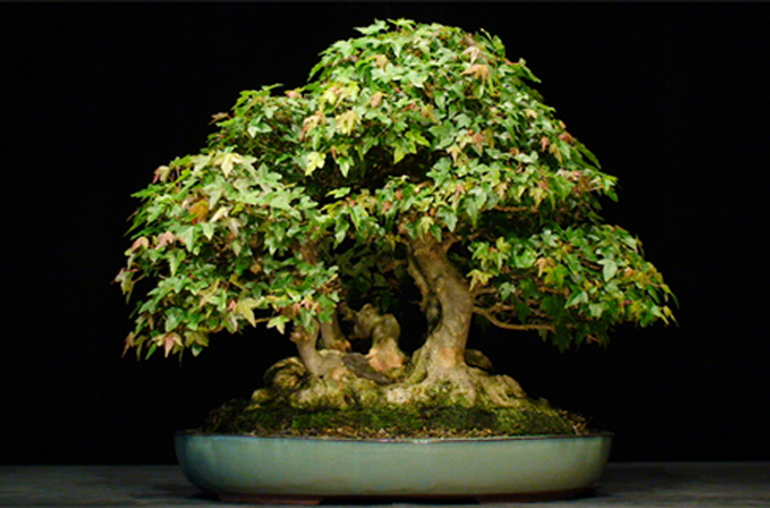
All the exposed roots have grown together to form one nebari on this old Trident maple clump. The photo is from the 2010 Expobonsai Quebec.
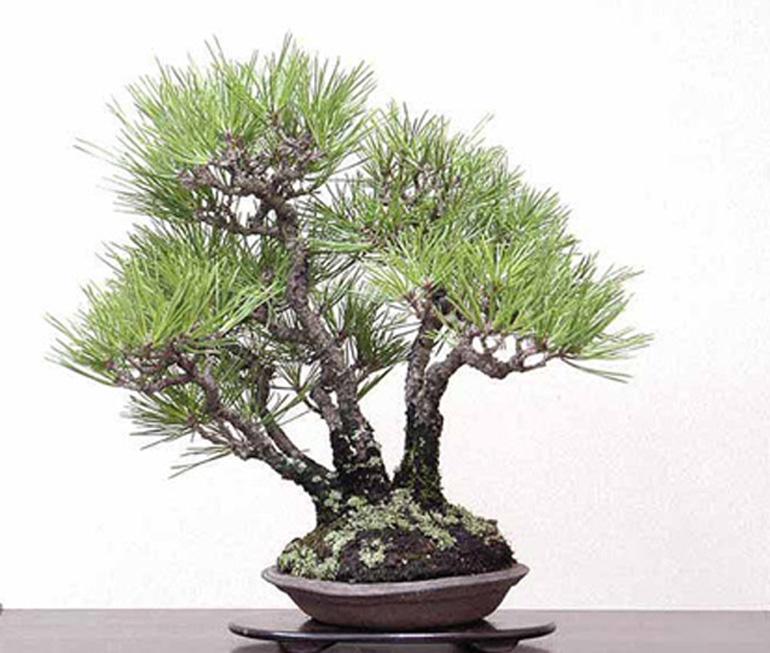
We'd be remiss if we didn't show a Shohin clump. This little pine with its shaggy too-long needles, aged lichen covered trunks and funky almost too-small pot is near perfect in its imperfect naturalness. From Shohin Bonsai World, Nishinomiya branch. For a detailed look at pine bonsai, you might want to take a look at our Masters’ Series Pine book.
Last but not least. Michael Hagedorn’s now famous and freshly touched up Mountain Hemlock clump style bonsai (I can't say for sure that all the trunks share the the same roots, but my best guess is they do - you'll have to ask Michael to find out for sure). The photo is from Micheal’s Crataegus Bonsai. Here's what Michael wrote about it: “And this is how the Mountain Hemlock looks today, in January, 2015, after minor wiring touchup. More and more I’m inspired by what I see in the local mountains, which do not have as severe an environment as the Rockies, but tend to feature moister, calmer forests. In the nearby Cascades and Coast ranges I’ve been very taken with the relationships of trunks, just visually, and also the communities of trees ecologically, and have sought out trees for bonsai that might communicate this. I tried to present this hemlock as simply as possible—without a pot or visible slab—to highlight those features.”
Under Appreciated Bonsai?
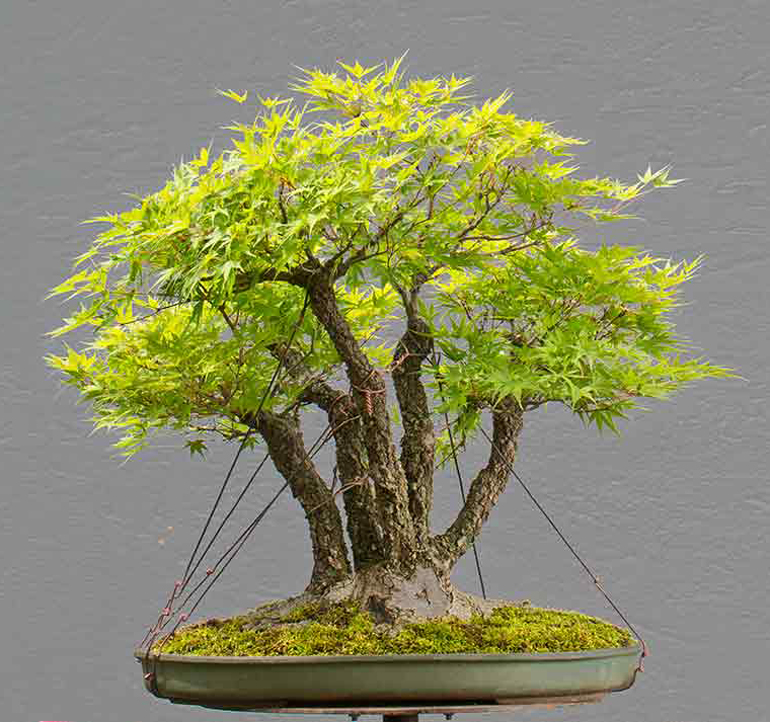
This single tree with five trunks is an Rough bark Japanese maple (Acer palmatum Arakawa). It was imported from Japan by Akina Bonsai, Poland and redesigned by Walter Pall last month. As you can see, Walter decided to use guy wires. The trunks are on the large side for bending and moving with conventional wiring and wrapping wire around each trunk might damage the bark
Maybe it’s just me, but I sometimes feel like clump style bonsai (trees with one root system and multiple trunks) are under appreciated in our bonsai world. Single trunk trees with massive girth or dramatic movement (or both) seem to more readily capture our imagination. This is unfortunate. Well done clump style bonsai require degrees of subtly that are often missed by casual viewing. Multiple trunks that complement each other to create a balanced and natural feel aren’t as easily done as you might think.
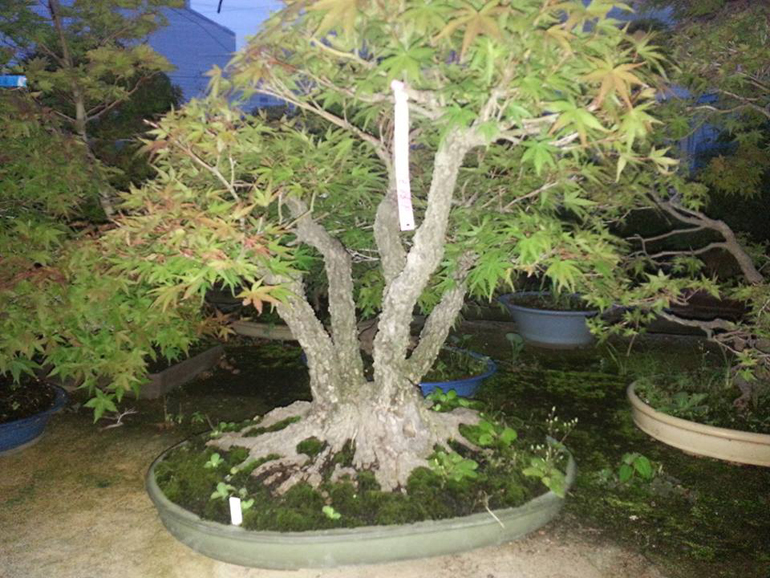
Before. Though Walter doesn't say, you might imagine that this photo was taken soon after it was imported
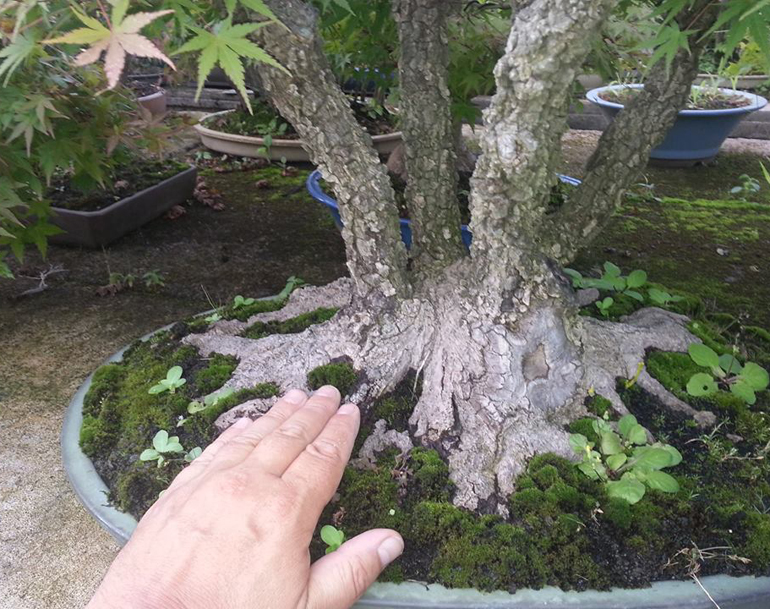
A good nebari lends a feeling of age and stability, and this one is beyond simply 'good'
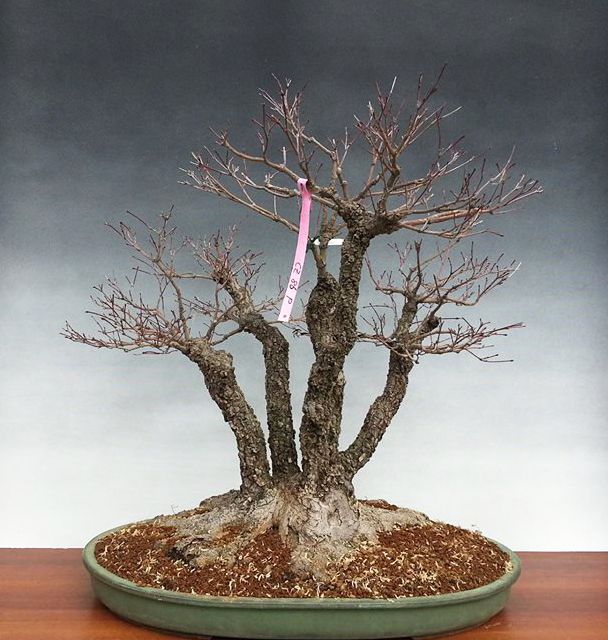
Recently repotted. This photo with no leaves and new soil shows how dominant the trunks are in relation to the branching. If each trunk had more developed branching (something that's usually desirable in single trunk trees), the individual crowns would crowd each other.
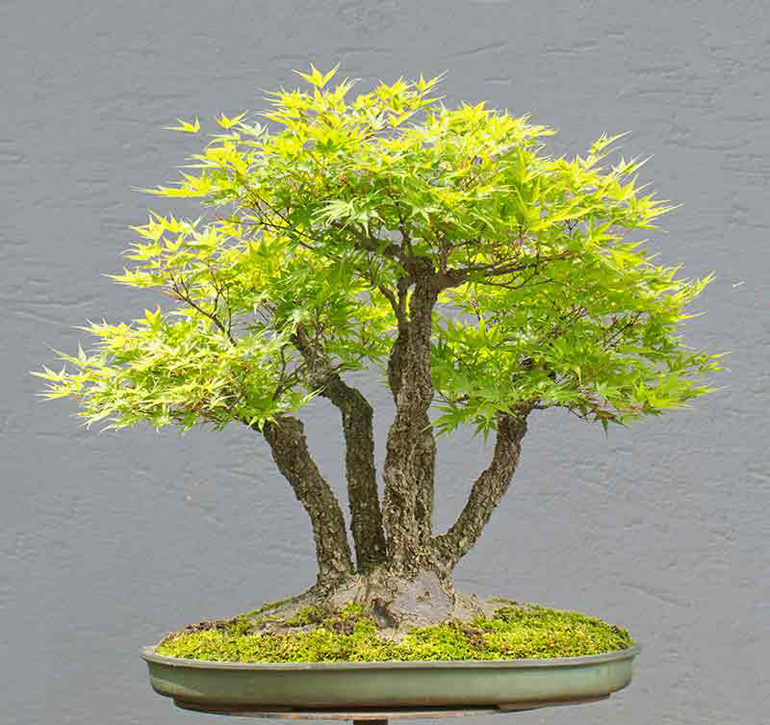
Leafed out and waiting for Walter's guy wires. I wonder if he waited for the leaves to make sure each trunk was healthy enough to move.
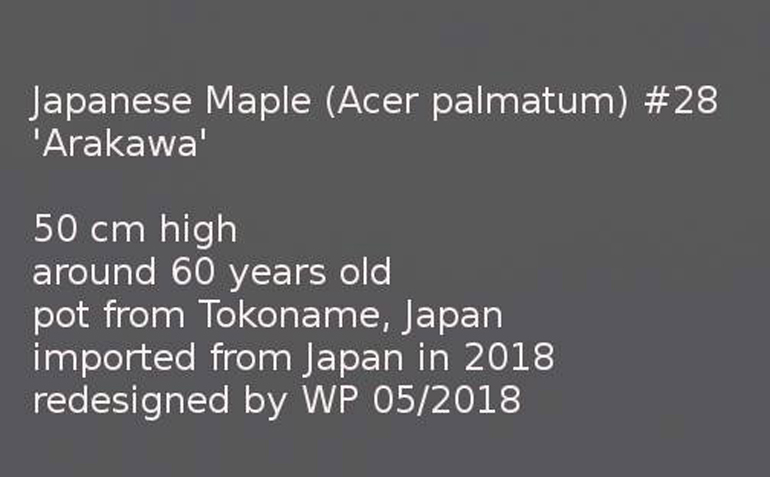
50 cm is just shy of 20 inches.
Bonsai Mystery Solved
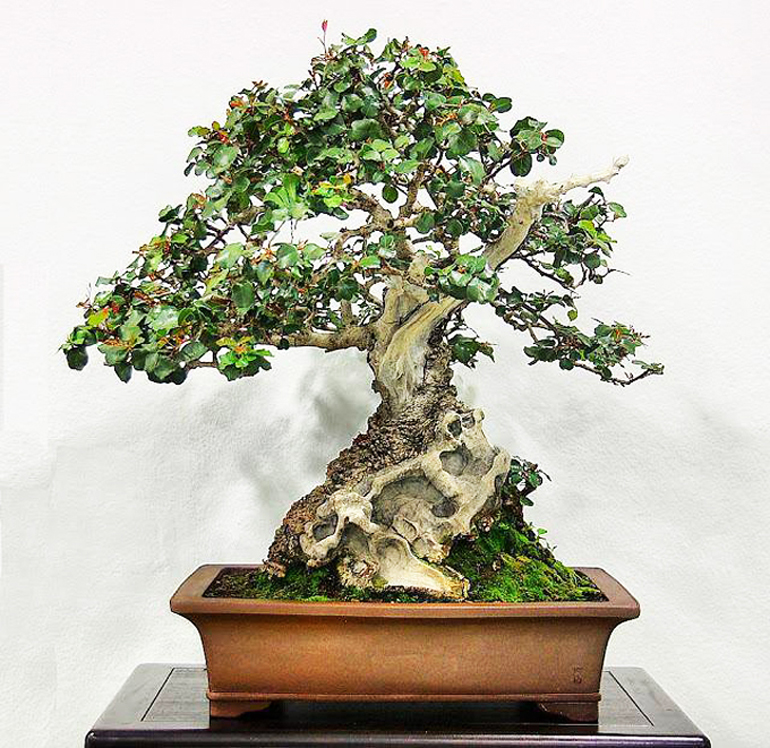
If your short term memory is still functioning, then you might remember this tree from yesterday. Or from March, 2014, when we first featured it. If you forgot it from four years ago, join the club. Here's part of the caption from that 2014 post... "Carob Tree (Ceratonia silicua) by Salvador de Los Reyes from Spain. Owner, Manolo Vargas. Height: 90 cm. Added by Gustavo Celayes
The mystery of yesterday’s unidentified tree was solved while I was looking for some more bonsai by Salvador de Los Reyes (yesterday’s artist). There it was, a Carob tree in a post from four years ago. Right here on Bark.
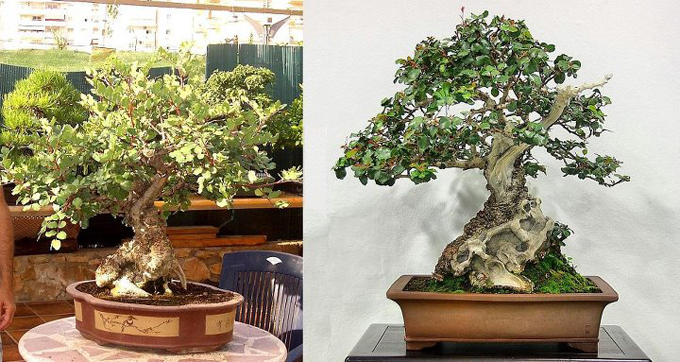
Carob bonsai from yesterday. No longer a mystery. Here's yesterday's caption... "A mystery tree before & after. Salvador identifies most of his trees, but not this one (that I could find at least)."
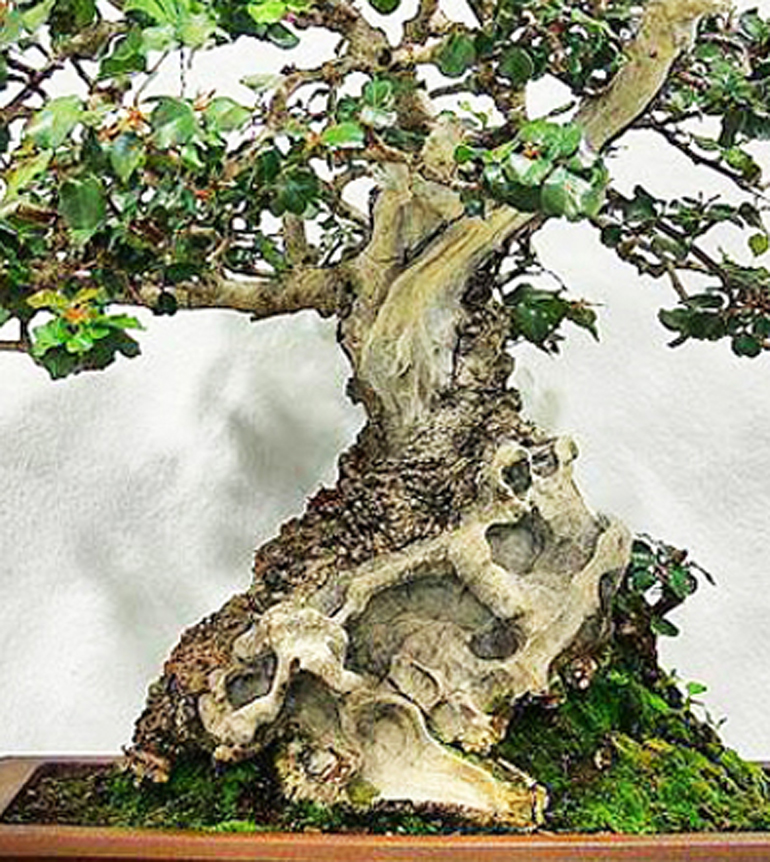
Four Before & After Bonsai
Before & after (antes y depues) Shimpaku juniper by Salvador de los Reyes.
Four for the price of one. Still sorting our from vacation (no vacation goes unpunished) so it’s back to our archives (July, 2012). All four transformations are by Salvador de los Reyes.
A mystery tree before & afte. Salvador identifies most of his trees, but not this one (that I could find at least).
Sabina juniper
A bonsai rarity. Tamarix before & after. You see don't many Tamarix bonsai and you almost never see a well-styled weeping bonsai.
An Exceptional Bonsai – Before & After
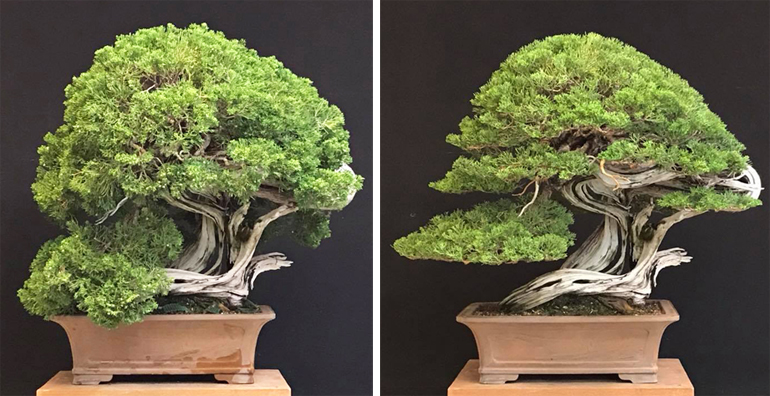
Here's an excellent example of a before and after with an already established tree. It just needed a talented bonsai artist and some free time to bring it back to its previous splendor. In this case the artist is Gabriel Romero Aguade. The tree is an impressively masterful Chinese juniper (Juniperus chinensis). Not that you don't have eyes of your own, but I feel that some extra excitement is warranted with a tree like this. It resides at the Royal Botanical Garden of Madrid.
Here are Gabriel Romero Aguade’s comment (Spanish then English)…
“Antes y después del Juniperus chinensis trabajado en el Real Jardín Botánico de Madrid. Si quieres verlo en vivo y en directo está permanentemente expuesto en el jardín. Vale la pena visitar el Jardín Botánico si vas a Madrid.”
“Before and after of the Juniperus chinensis that was worked on at the Royal Botanical Garden of Madrid. If you want to see it in person, it’s on permanent display in the garden. It’s worth a visit to the Botanical garden if you’re in Madrid.”
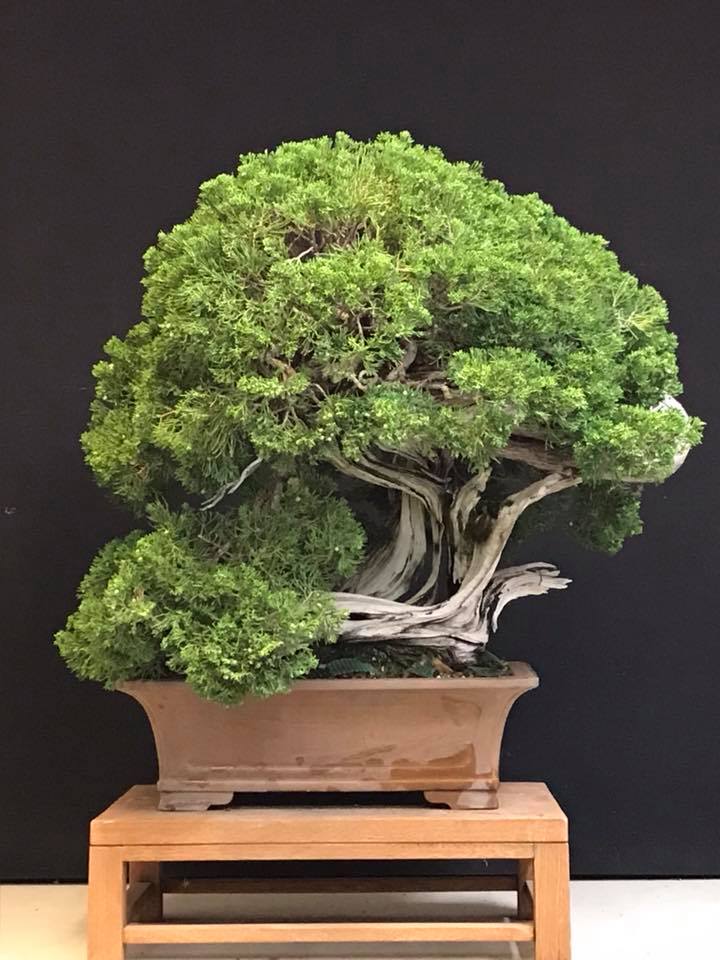
Before closeup. All you need now are some crack wiring and trimming skills, and the nerve to tackle such a masterpiece
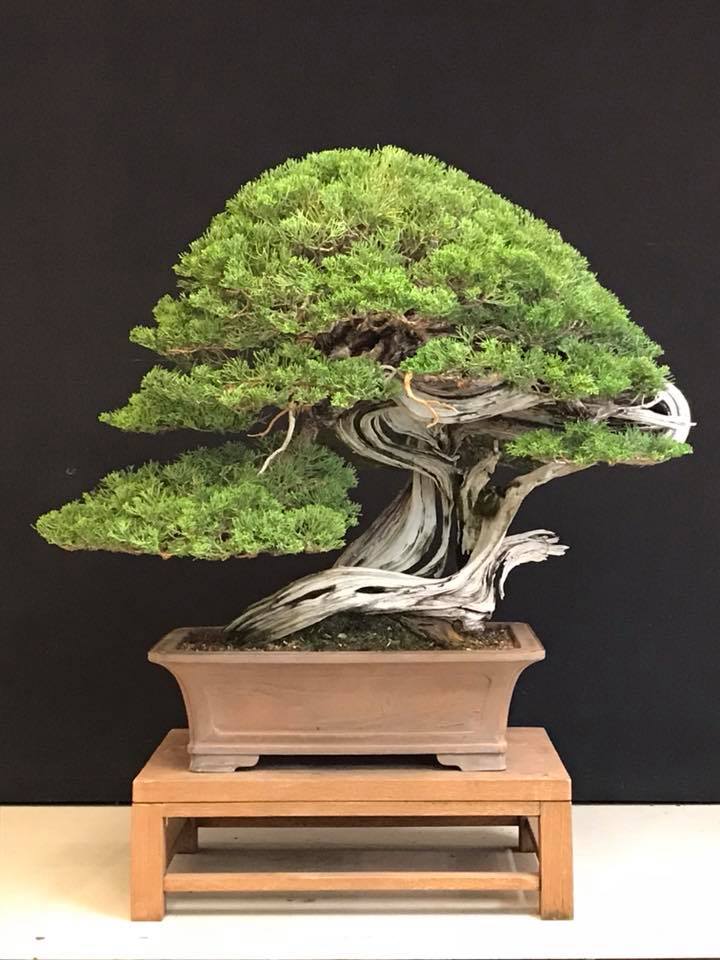
After closeup of an exceptionally well done job on an exceptionally beautiful tree.
Back Savers – Suthin’s Shohin
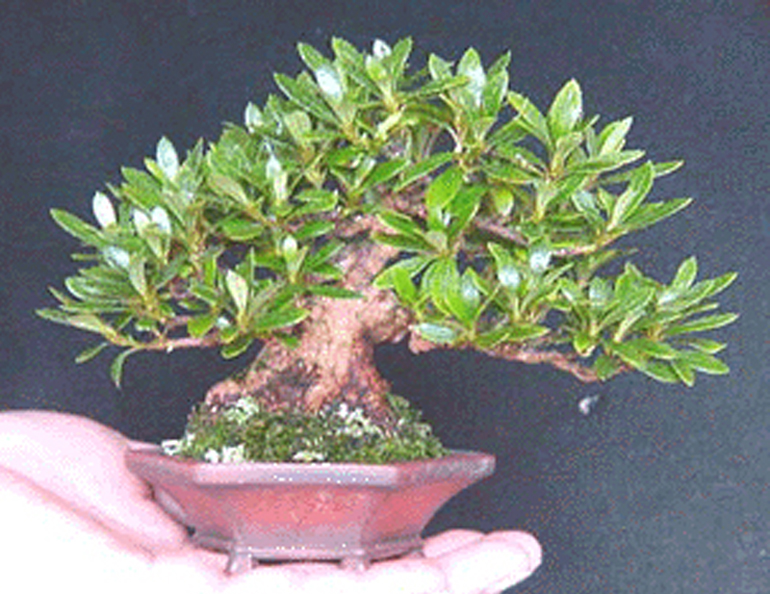
Bonsai in hand. This little masterpice by Suthin Sukosolvisit looks like a Chinzan Azalea. But that's just a guess. Suthin doesn't say.
Still recovering from vacation and a serious computer meltdown (fixed now by there’s chaos in its wake), so it’s back to our archives. This one originally appeared in August, 2009 (Bonsai Bark’s Pleistocene).
Note: non of the links are still active, so this will be a linkless post. A first for us
I’ve long been a fan of Suthin Sukosolvisit’s. Not just because of his shohin, but because he shows mastery across a range of bonsai sizes and styles. Still, shohin is what this post is about, and when it comes to shohin, Suthin is one of the best artists around

Suthin Sukosolvisit shows some serious stuff with this powerful shohin (small bonsai) display. This type multi-tree display is the way shohin bonsai typically appear in judged shows.
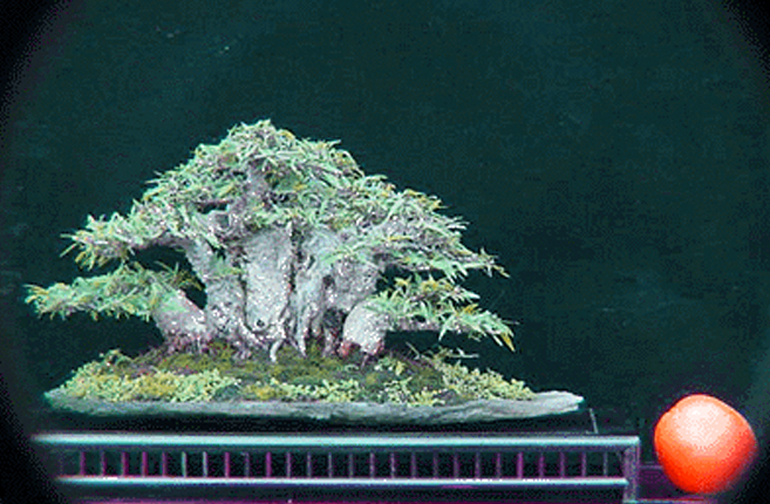
Suthin doesn't say, but I'm pretty sure this is a Willowleaf ficus.
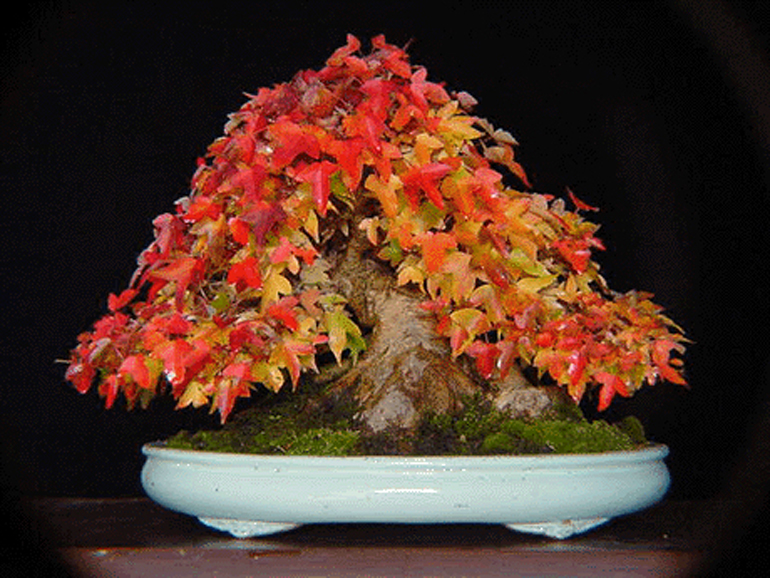
Trident maple in full fall color. Whether or not it qualifies as a shohin, your guess is as good as mine (maybe better).
When the Sun Gets Too Hot
Award winner at the 2012 U.S. National Bonsai Exhibition for the Finest Deciduous Bonsai. It's a Japanese Maple by Suthin Sukolosovisit of Royal Bonsai. It has little to do with the topic of this post (except that Japanese maple leaves are prone to sunburn), but you might like to know that the 2012 U.S. National Bonsai Exhibition is out of print and the last two albums (2014 and 2016) are still available.
When the sun gets too hot…
July 16, 2015 by Michael Hagedorn, Crataegus Bonsai
“There are various ways of helping our bonsai cope with sun and not literally cooking them on our benches in the summertime. They are in pots, but it doesn’t mean we want to fry a special root dish, in a soil sauce…
“Because bonsai are in pots, they are very unlike trees in the ground. We want to reduce any similarities to a dog in a car on a hot day.”
Fry your bonsai it can, without cooking oil…
“There are two situations… A cooler climate with rare spikes in temperature to 100 F / 38 C or higher that might last a few days, and then there are the hot summer areas that are always that high:
Sudden, rare spikes in cooler climates:
Simply relocate your trees temporarily. Don’t bring them inside, but on the ground is a good start, under benches maybe, in light shade. Try to avoid full shade. Place them close together, but still retaining ease of watering. Plants near other plants cool one another with transpiration. Placing bonsai on grass is going to be a lot cooler than on a sidewalk.
Hot weather areas:
These areas need site modification… ”
For the rest of the article, visit Crataegus Bonsai.
BTW: if you’ve never visited Michael’s Crataegus Bonsai, you’re missing some of the best writing and most useful bonsai information on the web. And speaking of writing, Michael is the author of one of our favorite bonsai books: Post-Dated – The Schooling of an Irreverent Bonsai Monk.
Photo from Shohin Bonsai by Morten Albek (out of print).
A Watering Wand is an excellent idea. As is a Fog-It nozzle (not shown here but available at Stone Lantern).
Bonsai Perfection – Time to Dream
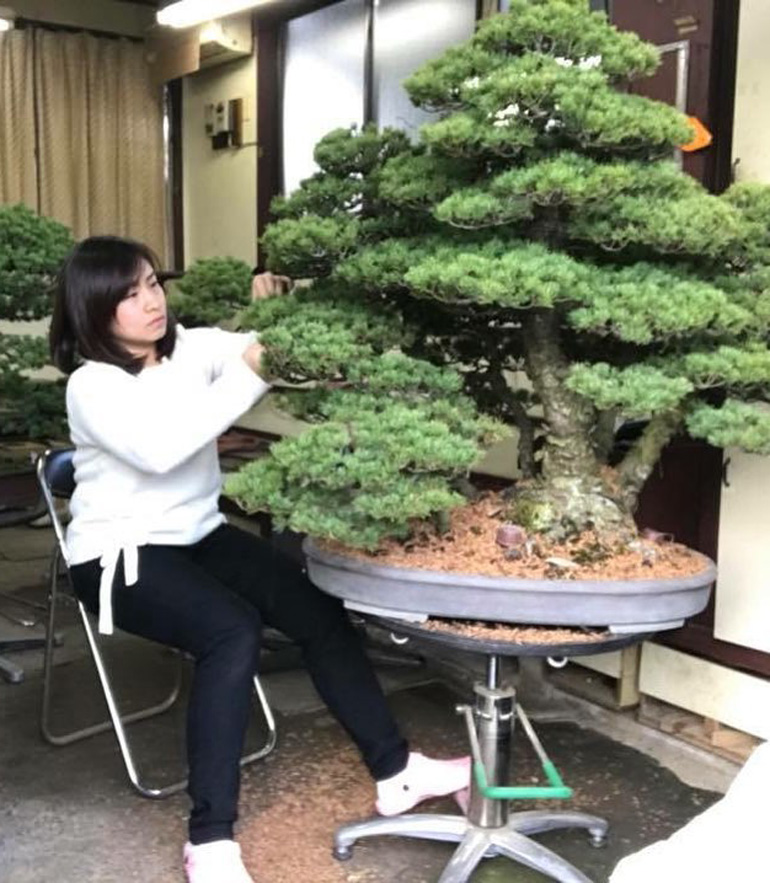
Just in case you think your monster bonsai is too big for a Green T Hydraulic Lift Turntable... The following is the caption for this photo (from G T's site)... "Matsuda san is the new entry in the Masahiko Kimura Bonsai family and her page Kimura’s home Bonsai has already gained world recognition." And of course Green T is an important part of Kimura's workshop (see below). BTW, the tree looks like a Japanese five needle pine (Pinus parviflora)
Flying cross country today, so we’ve got a rerun for you. It’s a bit of an infomercial, but we think it’s a good one with the potential to upgrade your bonsai experience and your bonsai. It’s from January of this year.
Time to dream about working with you bonsai in style and enjoying the process in ways you haven’t yet imagined. And what better dream than working on your trees with a Green T Hydraulic Lift Turntable of your own?
Continued below…
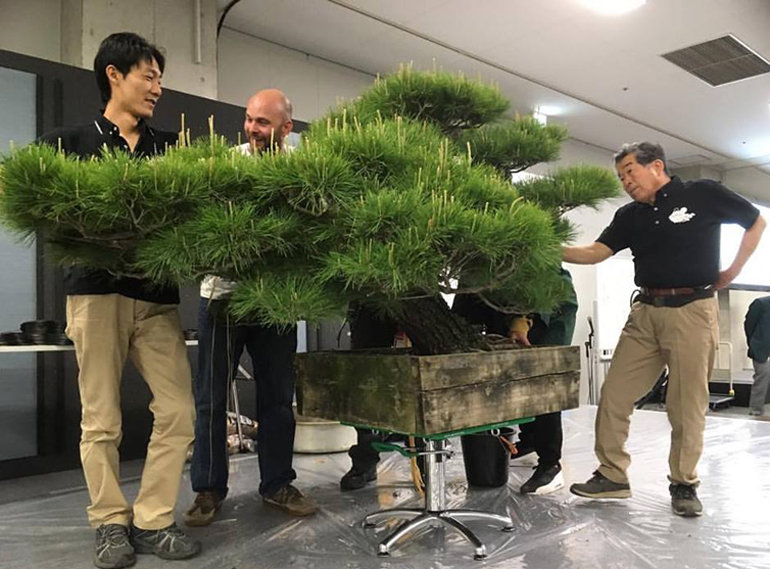
That's famous bonsai artist, Kunio Kobayashi on the right, getting ready to tackle his monster demo tree at last year’s World Bonsai Convention. And yes, that's a Green T not even straining to hold the behemoth up.
We’ve got four Green T models now. In addition to the Green T Basic model we offer the New Green T Plus. And with each of these two you have a choice of round or square work surfaces.
Perfection. A brilliant Trident maple bonsai on a brilliant Green T Plus Hydraulic Lift Turntable
A Green T Turntable will change the way your work on your bonsai and enhance the results… and you’ll enjoy the journey
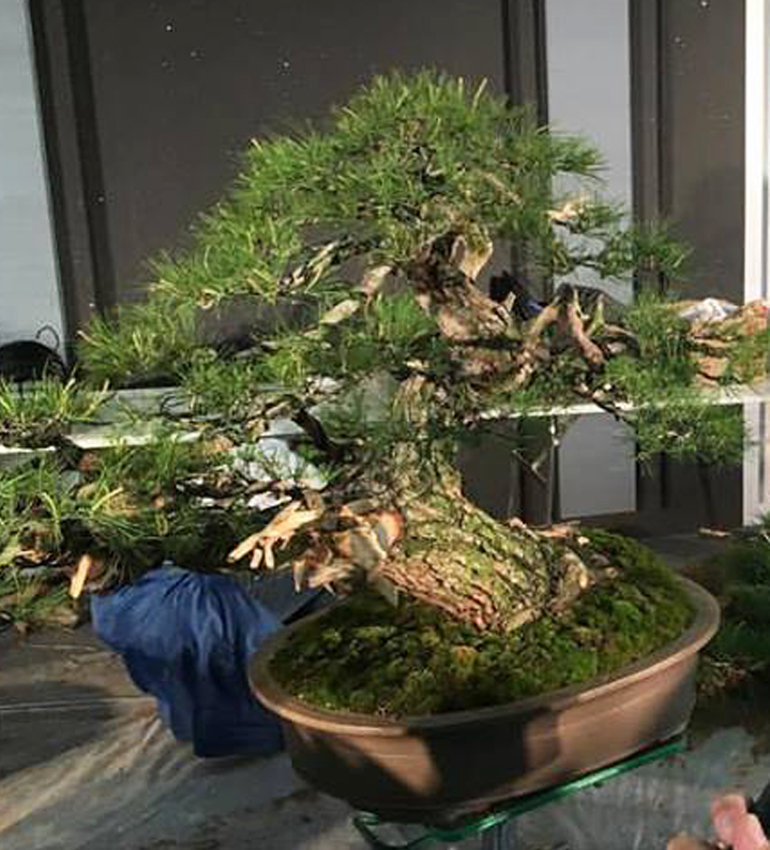
Tree just above, after. I don't know how long it took, but because it's a demo, it must have been done in less than a day. Many hands make light work
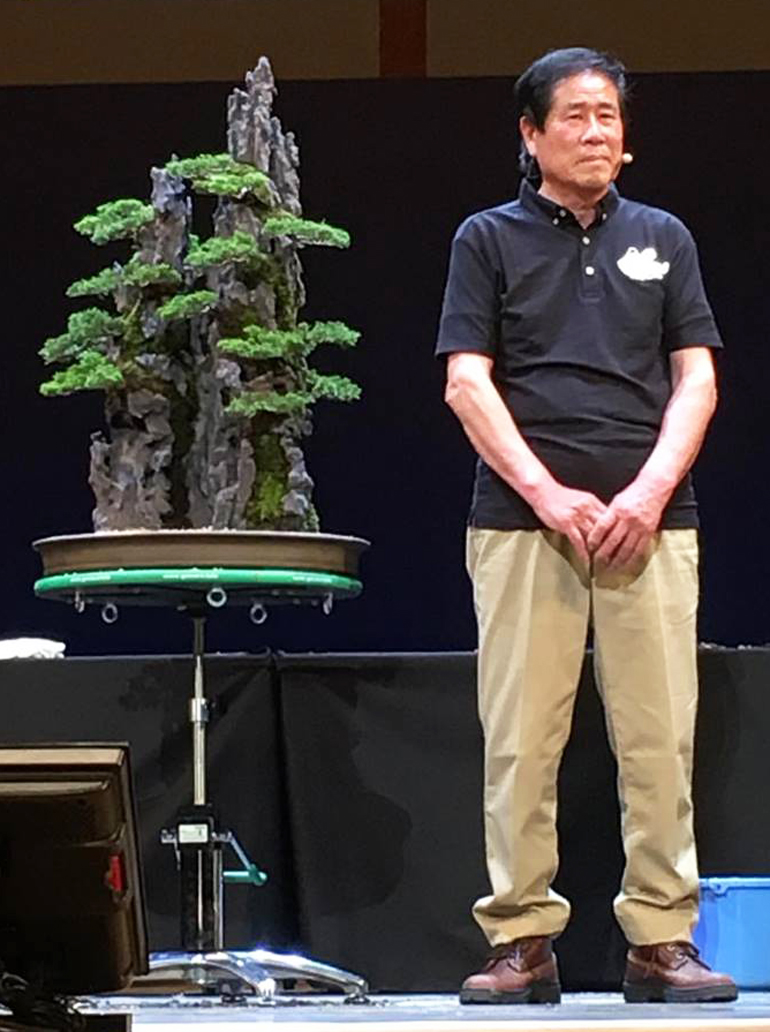
The famous Masahiko Kimura with his demo planting sitting on a Green T Plus at the World Bonsai Convention.

